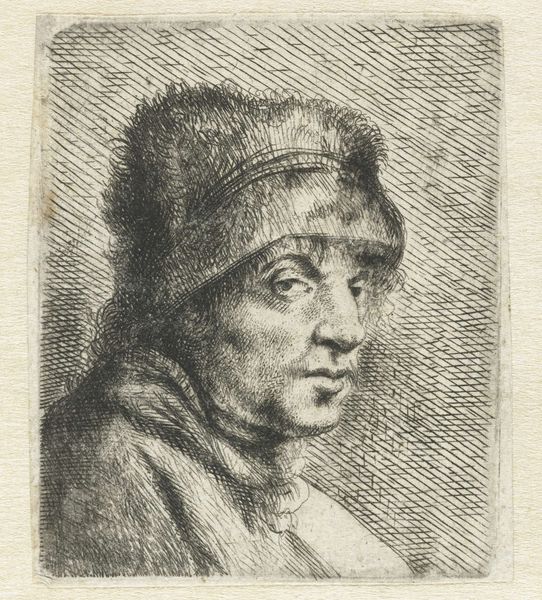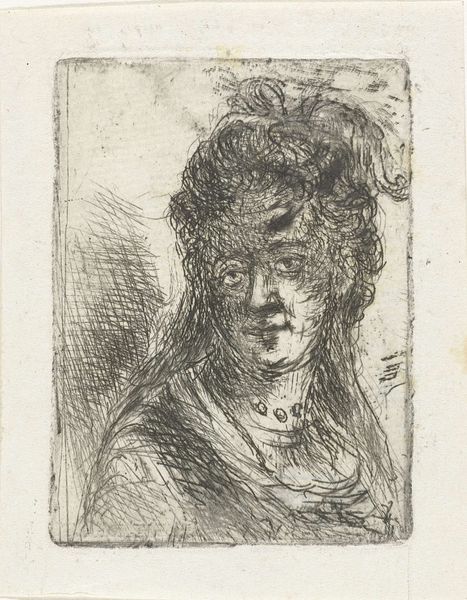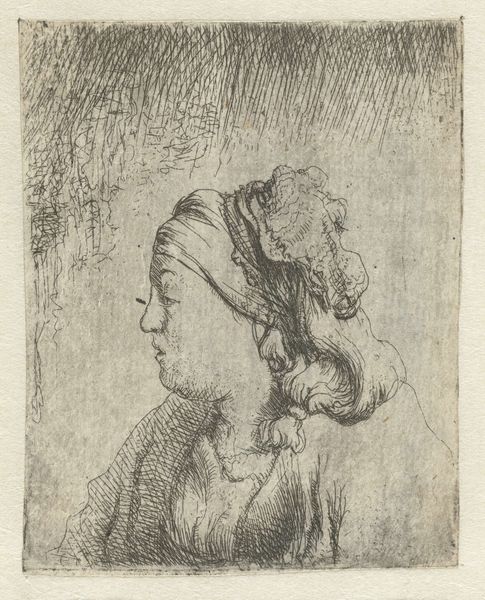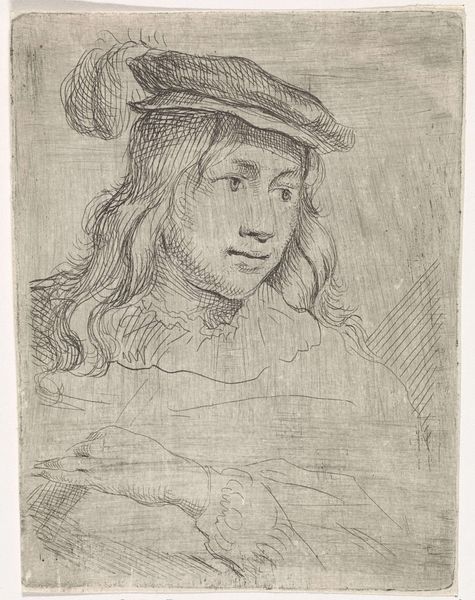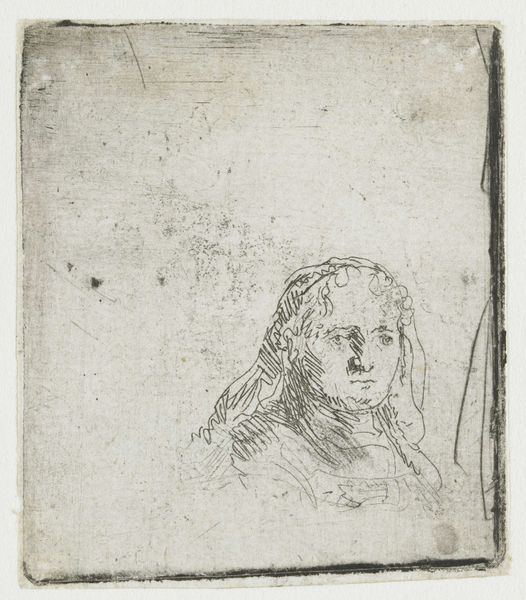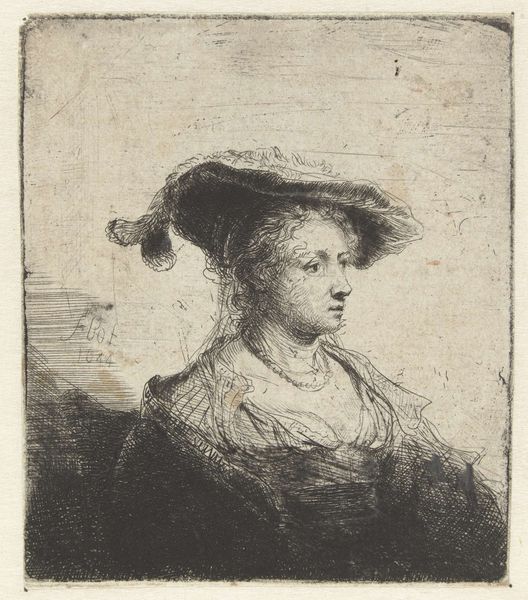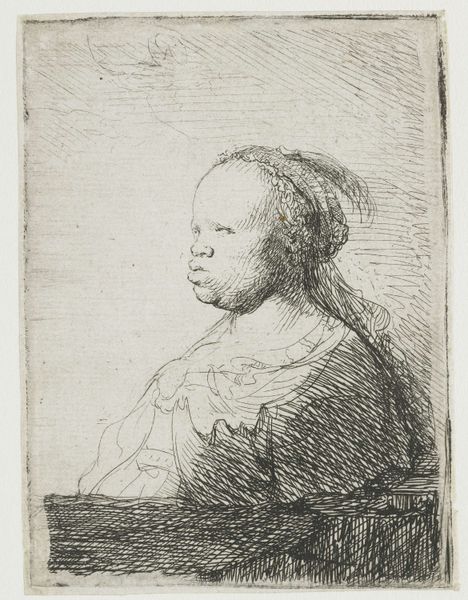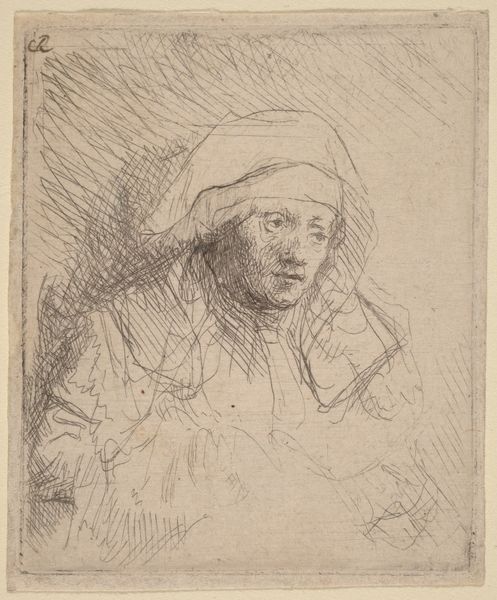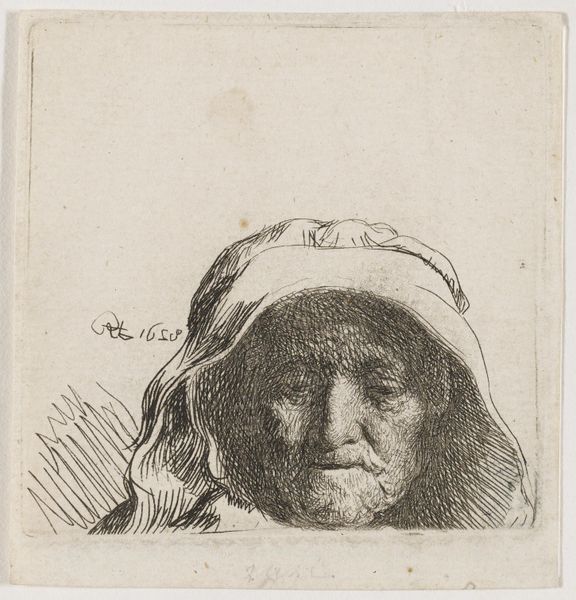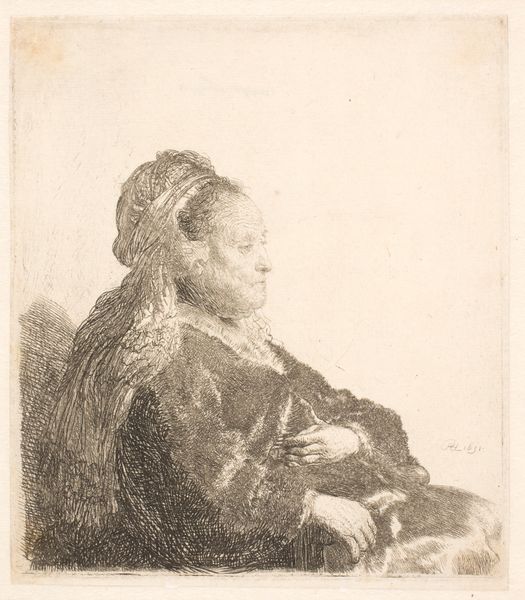
etching
#
portrait
#
baroque
#
dutch-golden-age
#
etching
Dimensions: height 73 mm, width 60 mm
Copyright: Rijks Museum: Open Domain
Editor: So here we have Jan Lievens' "Portret van een oude vrouw met bontmuts", or "Portrait of an Old Woman in a Fur Cap", an etching likely created sometime between 1625 and 1674. It's strikingly raw, almost unfinished in its appearance, which I find interesting. What elements jump out to you? Curator: The roughness of the etching is precisely where the work gains power. The material limitations – the copper plate, the acid, the artist’s hand moving the burin – these aren’t constraints, but generative forces. Note how the etched lines define not just the woman's form, but also her social standing, implied by the fur cap and shawl. Editor: Her social standing? I wouldn't have picked that up immediately. It feels like a simple character study. Curator: Think about access to materials, especially in 17th century Holland. Fur wasn't cheap. Etching, as a reproductive medium, also speaks volumes about accessibility. Was this portrait intended for a wider audience? Did that accessibility challenge existing hierarchies around portraiture, which traditionally served wealthy patrons? The means of production themselves were shifting artistic value and accessibility. What are your thoughts on the use of such simple tools to convey so much about age, poverty, or class? Editor: I guess I hadn’t considered the relationship between the materials, the process and how it would have been received then. Now it’s all just hanging on a wall. Knowing the material context definitely changes my perception. Curator: Precisely! It encourages us to reconsider our own consumption of art. Editor: Thanks, that gives me something new to consider with similar portraits going forward.
Comments
No comments
Be the first to comment and join the conversation on the ultimate creative platform.
